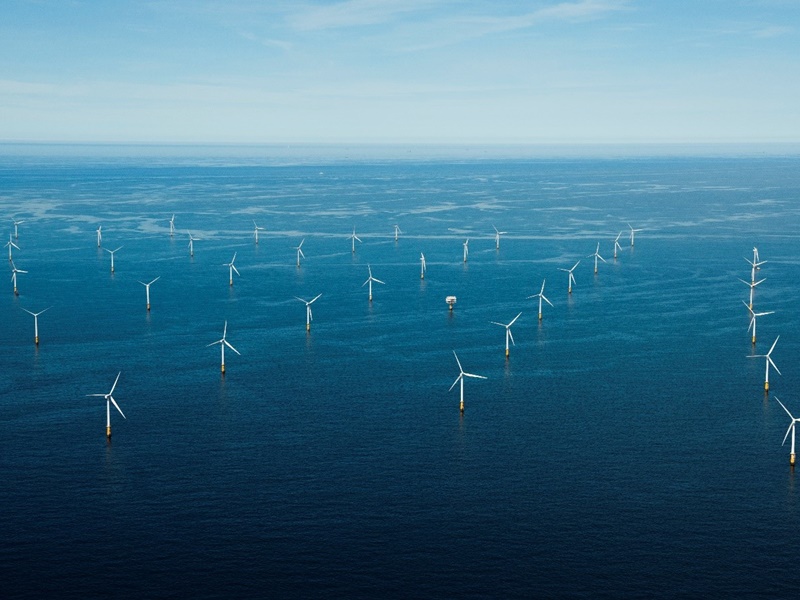Innovative design lowers costs of offshore wind farm scour protection systems by 30%
Thanks to the optimisation in design of scour protections for three offshore windfarms in Denmark, the developer Vattenfall has saved 30% in installation costs of the scour protection systems.

DHI and LIC Engineering was chosen as the team to design and optimise the scour protection systems for the three offshore wind farms: Vesterhav Syd, Vesterhav Nord and Kriegers Flak. The two first are nearshore wind farms located in the Danish part of the North Sea and the latter is situated in the Danish part of the Baltic Sea. The three offshore wind farms comprise a combined capacity of 950MW distributed over 113 turbines founded on monopiles driven 20-30 metres into the seabed.
As part of maintaining the seabed around the monopile foundations at a fixed level, a scour protection system consisting of rock is applied in the design. Commonly, scour protection systems are applied in two consecutive steps: 1. installation of a filter layer around the base of the monopiles consisting of finer material and 2. installation of an armour layer on top of the filter material. The monopiles may be installed prior to both layers or in between the two; in either case the total installation comprises three steps.
‘DHI and LIC Engineering designed the application of wide-graded rock as an innovative solution for scour protection at the three offshore wind farms, and this has shown to be a viable design option with great potential for cost savings.’
Victoria Ruiz Gomez, Project Manager Offshore Foundations – Vattenfall
Modern design principles based on recent research and development advances has enabled the use of one stone material consisting of wide-graded rock, and by those means neglecting the traditional two-layer solution. The wide-graded rock material encompasses both the filter- and armour effect, and can be installed at the site in one step. Considering the installation of the stone material and the monopiles, the total installation procedure has been reduced from three to two steps and as a result, a significant cost reduction has been achieved.
Read more